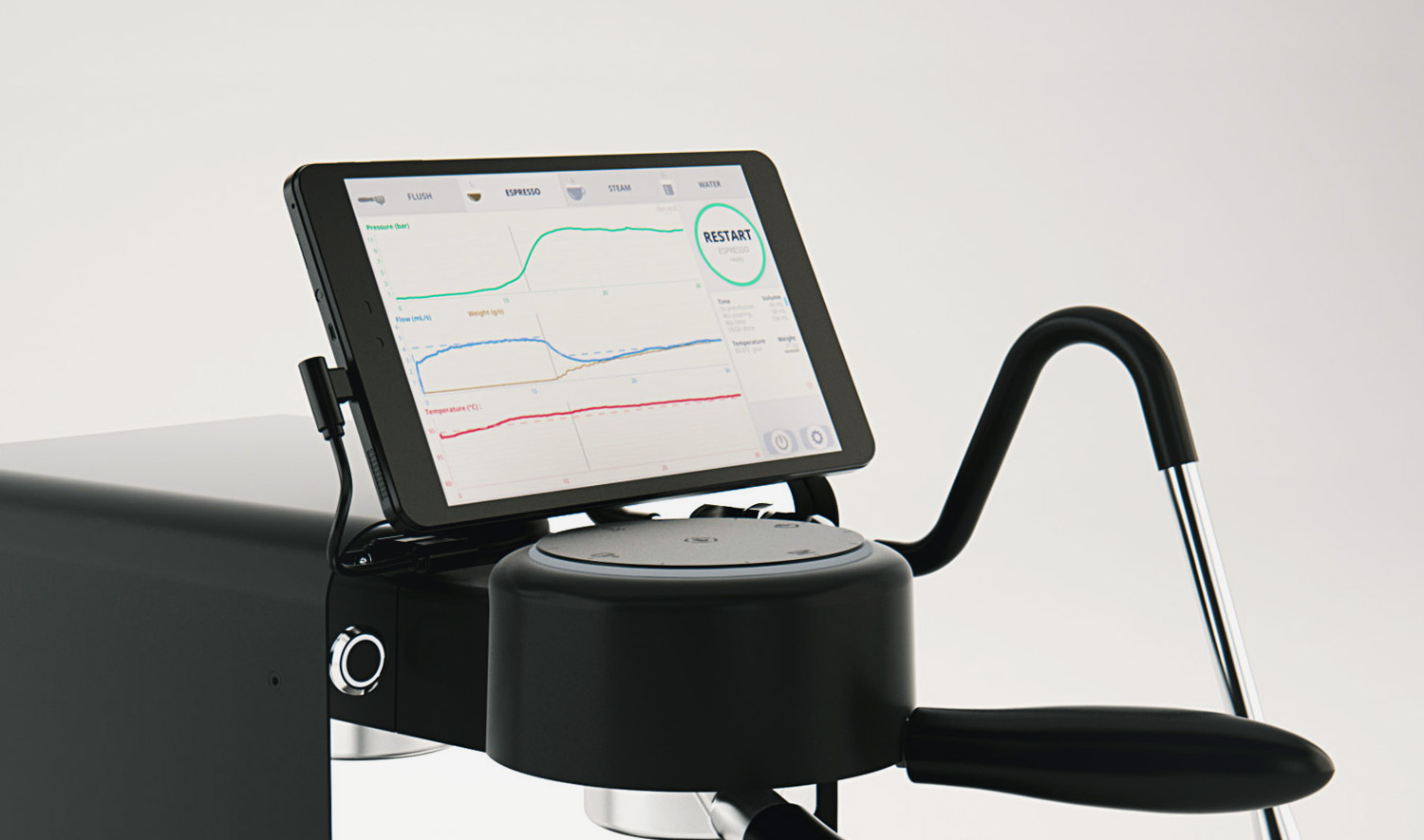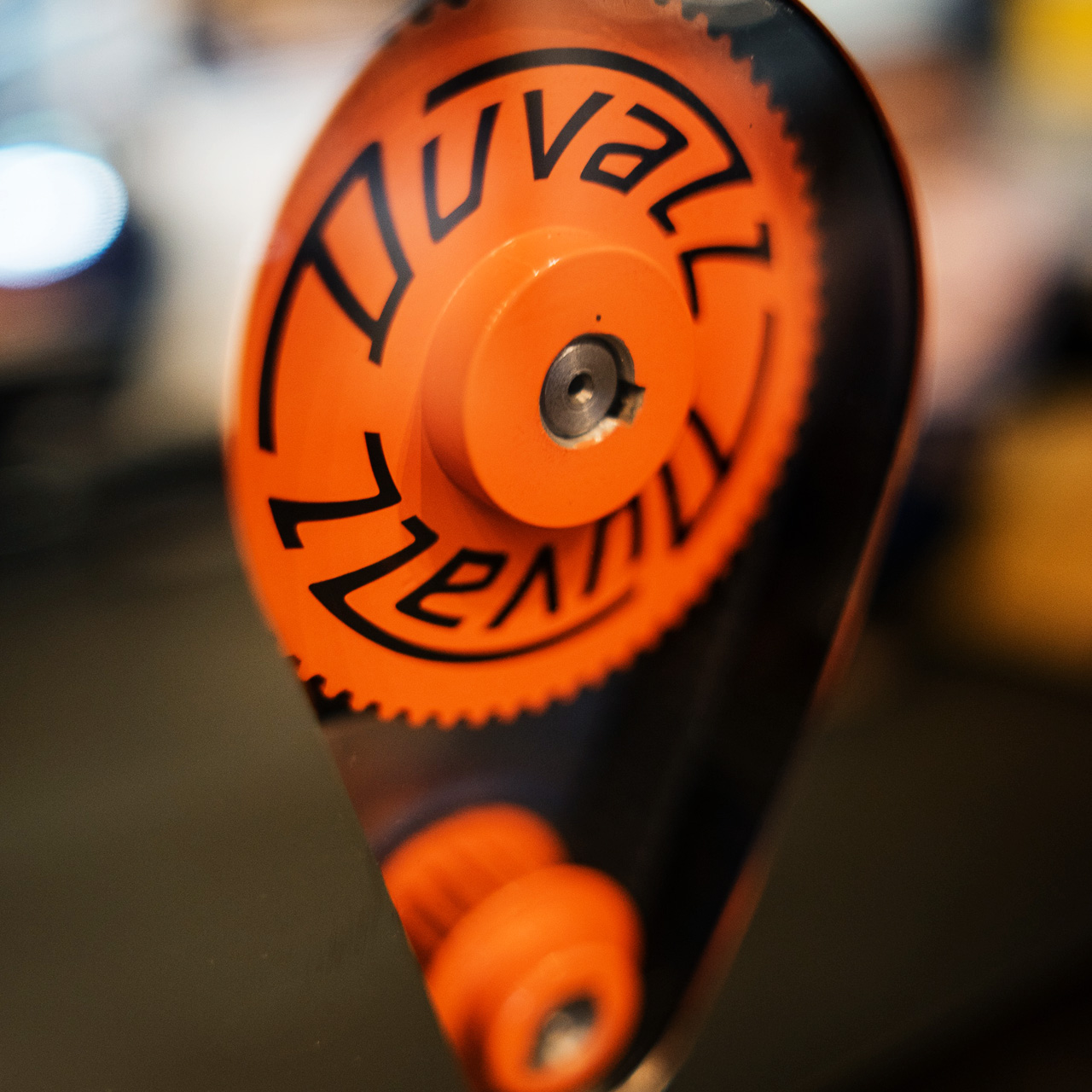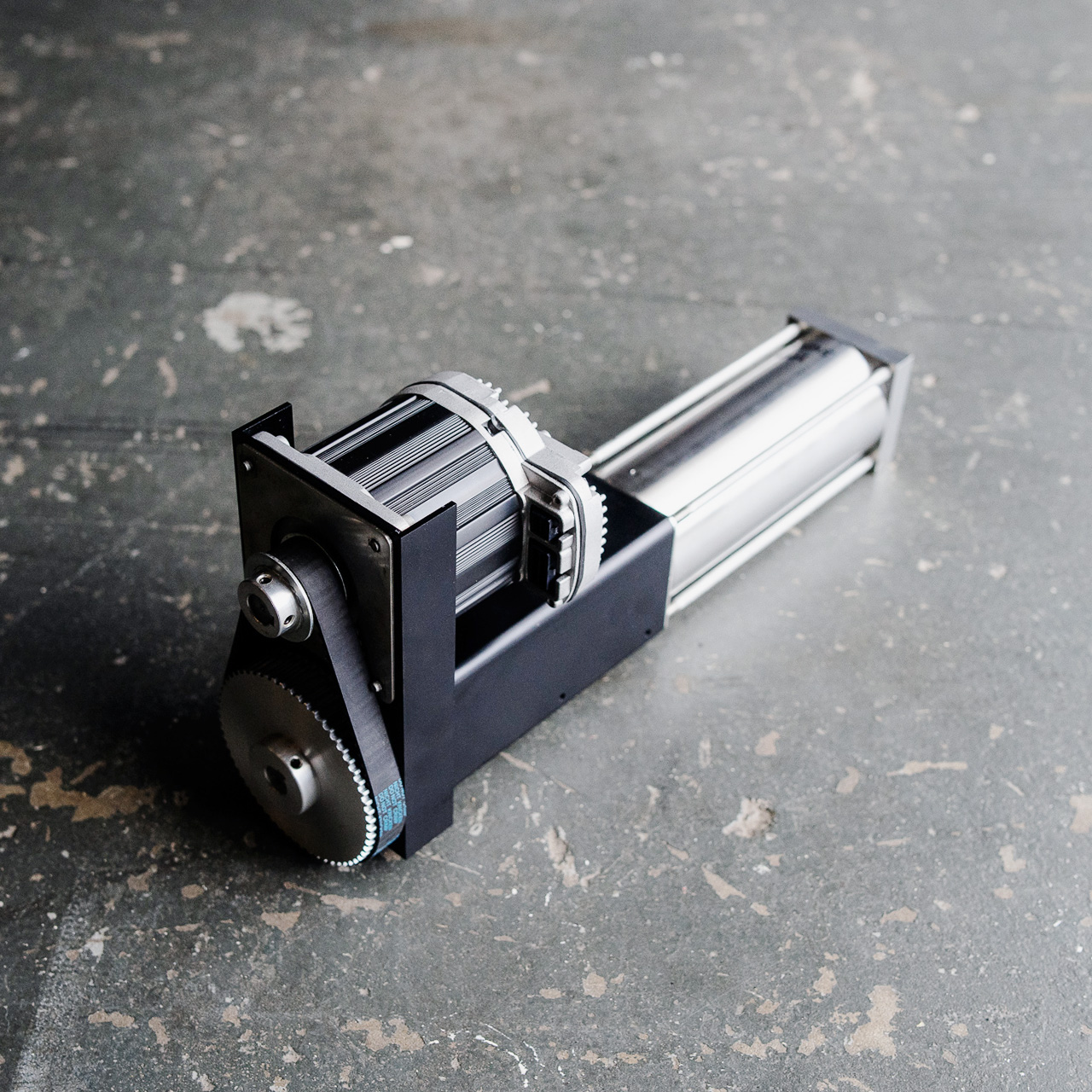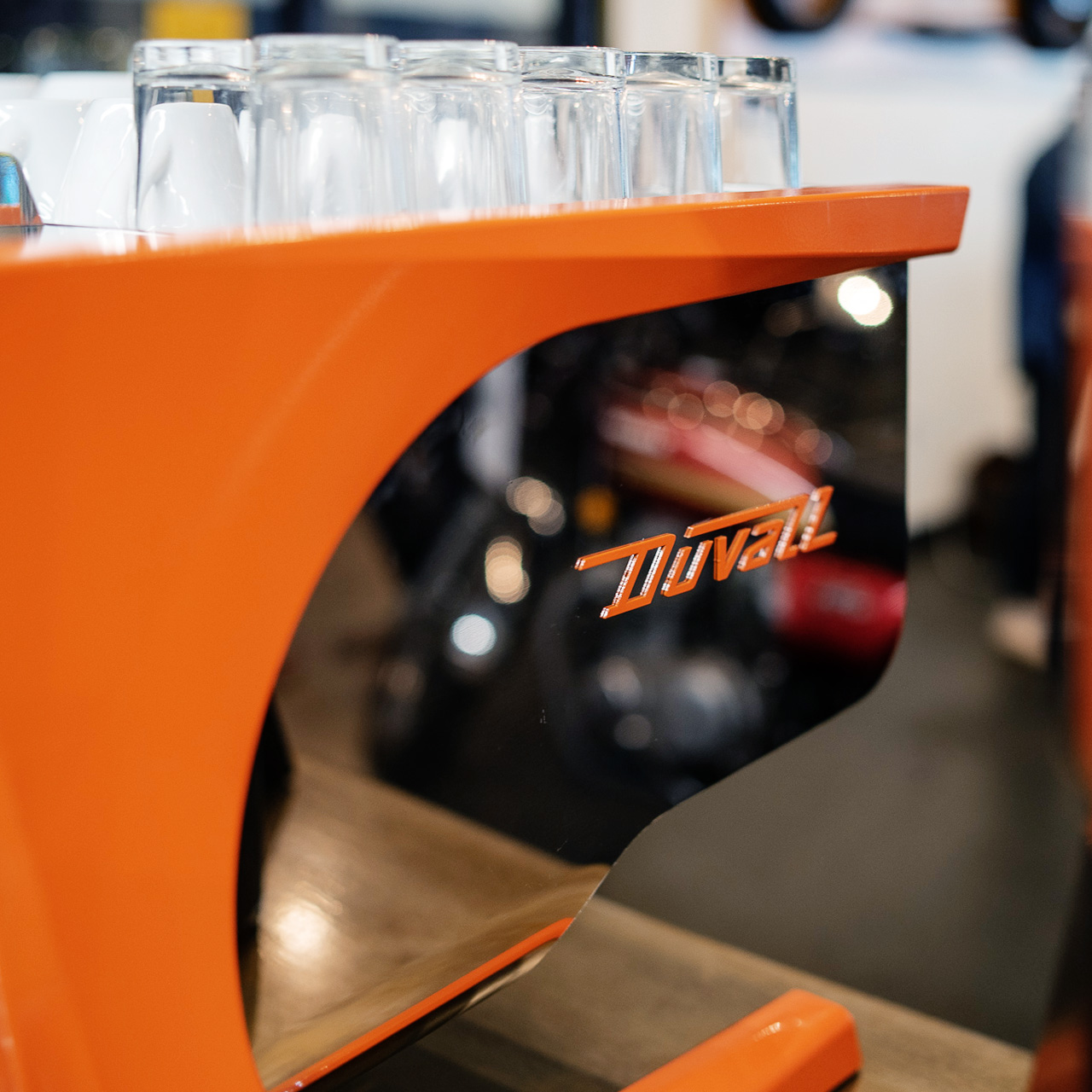Flow profiling is analogous to pressure profiling, which we learned about in Lesson 6.08, but it aims to control the flow rate rather than the pressure. In these machines, the flow rate is controlled by the system, and the brew pressure will continually vary as a result, depending on how much المقاومة the القُرص presents.
 Picture: Flow profiling on a Decent Espresso DE1XL. The display shows the pressure and flow of a shot in real time. Image courtesy of Decent Espresso.
Picture: Flow profiling on a Decent Espresso DE1XL. The display shows the pressure and flow of a shot in real time. Image courtesy of Decent Espresso.
The flow rate can be controlled in different ways: Decent Espresso machines monitor flow through the machine with multiple flowmeters and dynamically adjust the output from the pump to compensate. A concept machine, the Duvall FC-1, takes a different approach, using a large piston inside the boiler that pushes out a known volume of water — a bit like using a syringe to measure liquid.
Pictures: The flow profiling mechanism of a Duvall FC-1. Flow in these machines is controlled by a servo motor (left) which drives a piston (centre) to displace a known volume of water. Images courtesy of Duvall Espresso.
The advantage of profiling flow rather than pressure is that the espresso is less affected by variations in the القُرص المقاومة. This means that flow-profiling machines can be more forgiving of variations in technique or changes in grind size during busy periods. When a grinder heats up, instead of shots getting faster, the machine will lower the pressure in order to keep the flow rate constant. Because the shot time doesn’t change as a result — and because the change in pressure has a smaller effect on extraction and flavour than the change in shot time would — this results in more consistent espressos.
‘The grind size changes that occur throughout the daily operations of a shop have a relatively small impact on surface area–to-volume ratio and thus extraction rate’, explains Gideon Duvall, founder of Duvall Espresso. ‘In a typical 9-bar volumetric espresso machine, these changes in grind size will cause variation in shot time which will have an impact on flavor. In a flow-profiling espresso machine, the impact on flavor will be minimal or even unnoticeable, as shot time and brew ratio will be maintained.’
Flow Profiling and Channeling
Flow profiling may also help mitigate against channel formation or even fix channels that do appear. In most machines, when a channel opens, the flow rate will increase because the channel results in less المقاومة عادةً في تقنية القُرص. As the flow rate increases through the channel, التآكل increases, potentially opening up the channel even further.
In a flow-profiling machine, on the other hand, when a channel opens, the pressure will drop to compensate, reducing flow through the channel. This reduces the التآكل in the channel and may even give the channel a chance to ‘heal’ as coffee particles settle into the gap.
Restriction Profiling and Flow Profiling
Some machines, such as the ones made by Slayer و Dalla Corte Mina, use a variable flow restrictor to manage pressure and flow at the القُرص. These machines control the flow of water by changing the المقاومة from the flow restrictor. However, since the pressure and flow are determined by the المقاومة الخاص القُرص as well as the المقاومة at the flow restrictor, controlling the restrictor does not always directly control the flow rate.
To give an example: You might decide to set a flow rate of 5 ml/s during pre-infusion. You measure the flow rate without a portafilter in place (to determine the water debit) and then adjust the restrictor until you reach the desired flow rate. Once you start a shot, the water is pumped onto the القُرص at 5 ml/s until the time at which the مساحة الرأس is filled. At this point, the القُرص begins to put up المقاومة to more water being pumped in. Because the restrictor doesn’t respond to the change in pressure and the القُرص المقاومة begins to rise, the total المقاومة increases. As the total المقاومة goes up, the flow begins to decrease — so, for much of the preinfusion time, the flow isn’t 5 ml/s but instead a lower flow rate that depends on the القُرص المقاومة.
For most of the shot this class of machine thus offers restriction profiling rather than flow profiling. For flow profiling to occur throughout the entire shot, the machine needs to constantly measure the flow of water and adjust accordingly, to compensate for changes in the القُرص. This is similar to pressure profiling, which requires the machine to continuously measure the pressure at the القُرص and adjust accordingly.
Nonetheless, restriction profiling has some advantages over pressure profiling, says Sevan Istanboulian, owner of Advanced Brewing Systems, who was involved in the project to develop the Mina. ‘When you use a gear pump [for pressure profiling], you’re at the mercy of how fast المقاومة builds up and breaks in the القُرص’, he explains. During preinfusion, the set pressure will be reached only after the القُرص begins to provide المقاومة, he points out. With a restriction-profiling machine, the flow rate can be controlled right from the start, while the مساحة الرأس is filling.
The actual flow delivered by both restriction-profiling machines and pressure-profiling machines depends on the المقاومة عادةً في تقنية القُرص. Flow profiling throughout the shot relies on the machine being able to deliver a certain flow, no matter what happens inside the القُرص.
‘In the real world, no two pucks have the exact same المقاومة’, says Duvall. ‘With pressure profiling, this causes large changes in flavor. With flow profiling, this will cause very little impact’.



